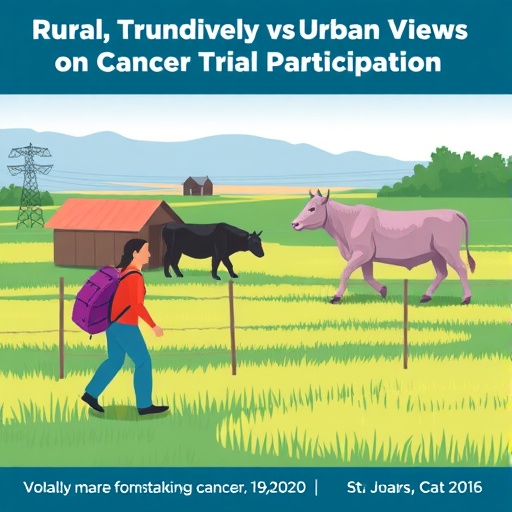In a groundbreaking study slated for publication in “Biological Sex Differences,” researchers Boulicault, Gompers, and Aalami, among others, have developed three critical maxims aimed at dismantling the pervasive notion of sex essentialism in scientific inquiry. This emerging research not only highlights the complexities of gender and biological sex but also encourages scientists to rethink traditional frameworks that often lead to oversimplifications and inaccuracies in their studies. The authors argue that by adjusting our approach to research, we can foster a more inclusive and accurate scientific paradigm that reflects the diverse natures of sex and gender.
The term “sex essentialism” refers to the belief that biological sex categorically defines one’s identity, abilities, and roles within society. This concept has dominated discussions in various scientific fields, including psychology, biology, and medicine, often resulting in a narrow understanding of gender and sexuality. Essentialist views have historically led to the categorization of individuals into binary definitions, which not only undermines the complexity of human biology but also perpetuates stereotypes and biases.
According to the researchers, the first maxim they propose is to recognize the limitations of binary classifications in scientific research. Traditional paradigms categorize individuals strictly as male or female based on anatomical and physiological characteristics. However, this binary framework fails to consider the wide spectrum of intersex variations and transgender identities that exist beyond these definitions. By adopting a more nuanced understanding of sex and gender, researchers can approach their studies with an awareness of the full scope of human variability, leading to findings that are more representative of the population as a whole.
The second maxim emphasizes the importance of contextualizing biological data within sociocultural frameworks. Researchers have long been tempted to isolate biological variables from their social implications, often disregarding the effects of culture, environment, and individual experience on understanding gender differences. Boulicault and colleagues propose that by integrating sociocultural contexts into biological research, scientists can better comprehend the intricate interplay between biology and behavior, leading to more holistic insights. This approach encourages an understanding of how societal structures and cultural norms shape our interpretations of biological differences.
Furthermore, the third maxim advocates for a multidisciplinary collaboration in scientific research. The complexities surrounding sex and gender necessitate a blend of perspectives from various fields such as sociology, psychology, and anthropology, alongside traditional biological research. By fostering collaboration, researchers can cross-pollinate ideas and methodologies, leading to a richer, more comprehensive analysis of data. This integrated approach could pave the way for innovative research questions that challenge existing biases and contribute to a more informed understanding of sex differences.
As the scientific community begins to embrace these maxims, implications extend far beyond academic discourse. The perpetuation of sex essentialism has significant real-world consequences, influencing everything from medical treatment efficacy to policies surrounding gender rights. Consequently, the authors urge fellow researchers and practitioners to examine their own biases and assumptions, considering how these affect their research outcomes and the broader implications for society.
Moreover, this discourse is particularly timely in light of ongoing debates about gender identity and representation in multiple arenas, including healthcare, education, and politics. The legacy of essentialism has often marginalized non-binary and transgender individuals, evidencing the urgent need for frameworks that respect and accurately reflect diverse identities. The maxims presented by Boulicault and her team could help guide practitioners toward developing strategies that enhance inclusivity in research and policy.
The team’s findings come at a crucial juncture, as discussions about gender continue to evolve on global platforms. Engaging with these complex issues is vital, not just from a scientific standpoint, but as a moral imperative. It challenges the status quo that has long dictated not only our understanding of biology but also societal norms. By embracing a more inclusive and pluralistic perspective on sex and gender, we can unravel the ramifications of essentialist beliefs and cultivate a culture of acceptance and understanding.
While the maxims provide an essential framework, the paper outlines future research agendas that delve deeper into implications of dismantling sex essentialism within various fields. The authors call for increased awareness and education, suggesting that both scientific literacy and sociocultural understanding should be elevated among researchers, educators, and the public alike. Interdisciplinary workshops and seminars can foster dialogue, ensuring that scientific research is informed not just by data analysis, but also by empathy and cultural sensitivity.
In conclusion, Boulicault, Gompers, and Aalami’s study serves as a clarion call to reshape the conversation around sex and gender within scientific research. By honoring the richer, multifaceted experiences of individuals that extend beyond binary definitions, we create a pathway towards science that not only informs but transforms society. As researchers adopt these three maxims, we may finally begin to see a shift away from reductive formulas in our understanding of human diversity, ultimately leading to a more equitable application of science.
In anticipation of further studies, the scientific community has an unprecedented opportunity to right historical wrongs, ensuring that future investigations embrace complexity and nuance. Encouragement is given to take these findings seriously, urging scientists, practitioners, and policymakers alike to engage in this necessary dialogue. The legacy of sex essentialism within scientific research is ripe for re-evaluation, and by prioritizing inclusivity, we can promote a future where science serves all humanity.
This foundational work, thus, exemplifies the intersection between scientific inquiry and social justice, framing a comprehensive research agenda that reflects the diverse realities of existence. As our understanding evolves, so too must our methodologies, crafting a scientific landscape that honors the intricacies of life itself. The ripple effects of these three maxims stand to revolutionize not just the academic sphere, but also the societal structures that rely on accurate representations of gender and sex, cultivating a more informed and representative world.
Subject of Research: The dismantling of sex essentialism in scientific research.
Article Title: Three maxims for countering sex essentialism in scientific research.
Article References:
Boulicault, M., Gompers, A., Aalami, L. et al. Three maxims for countering sex essentialism in scientific research.
Biol Sex Differ 16, 83 (2025). https://doi.org/10.1186/s13293-025-00748-x
Image Credits: AI Generated
DOI: 10.1186/s13293-025-00748-x
Keywords: sex essentialism, gender, biological differences, sociocultural context, interdisciplinary collaboration.
Tags: accurate scientific paradigmsbiological sex differencescomplexities of gender and biological sexcritical maxims for researchdebunking stereotypes in gender studiesdismantling oversimplifications in gender discoursediverse natures of sex and genderimplications for psychology and medicineinclusivity in scientific studieslimitations of binary classificationsrethinking traditional research frameworkssex essentialism in scientific research





